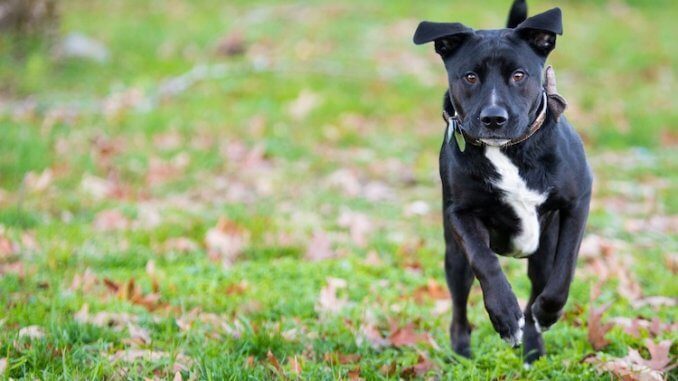
Have you ever seen a dog that seems to have the best of both worlds?
Meet the Boxador, a delightful mix of the playful Boxer and the loyal Labrador Retriever. These energetic furballs never fail to bring a smile to my face, and I’ve had the pleasure of knowing a few over the years.
When I first encountered a Boxador, I was amazed by their infectious enthusiasm and boundless energy. It reminded me of my childhood days with my rescue Labrador, only with a twist of Boxer charm. These dogs are incredibly affectionate, and their loyalty is unparalleled.
Spending time with a Boxador is like having a furry bundle of joy constantly by your side. They’re always ready for an adventure, whether it’s a hike in the woods or a game of fetch in the backyard. If you’re looking for a companion who can keep up with your active lifestyle and shower you with love, a Boxador might just be the perfect fit.
TABLE OF CONTENTS
- Boxador Quick Breed Summary
- Origins of the Boxador
- Physical Characteristics of the Lab Boxer Mix
- Temperament of the Boxador
- How to Take Care of a Boxer Lab
- How to Train a Boxador
- Common Health Problems in Boxer Labs
- Costs of Owning a Boxador
- FAQs: More Details About Boxadors
- So, Is the Boxador Right For You?
- Other Labrador Retriever and Boxer Mixes
Boxador Quick Breed Summary
Origins of the Boxador
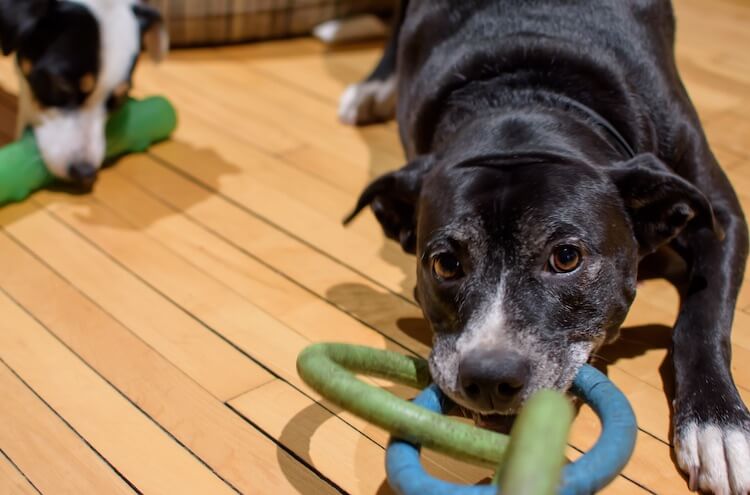
The Boxador is a delightful mix of two amazing breeds: the playful Boxer and the loyal Labrador. Understanding their origins helps us appreciate what makes this hybrid so special. Let’s dive into the background of each parent breed and see how they come together to create the wonderful Boxador.
The Playful Boxer
Boxers are fascinating dogs. Originating from Germany, these dogs were bred for hunting and guarding. Their strong, muscular build and boundless energy make them stand out. I’ve always admired their playful nature. Boxers love to be the center of attention and are fantastic with families.
These dogs are known for their expressive faces and high spirits. They’re always ready for a game and have an infectious enthusiasm. Boxers are also protective and loyal, making them excellent watchdogs. Their playful yet vigilant nature makes them a favorite among dog lovers.
The Loyal Labrador
Labradors, on the other hand, are known for their friendly and gentle temperament. These dogs originally hail from Newfoundland, Canada, where they were used by fishermen. Labs are famous for their intelligence and trainability. My first dog, a rescue Labrador, was incredibly loyal and always eager to please.
Labradors are versatile and adaptable, excelling in roles from family pets to service dogs. They have a natural love for water and retrieving, which stems from their working background. Their warm, friendly demeanor makes them one of the most popular breeds worldwide.
The Boxador Blend
When you combine the best traits of both breeds, you get the Boxador. This mix brings together the Boxer’s playfulness and the Labrador’s loyalty. The Boxador isn’t a purebred but rather a designer dog, gaining popularity in recent years. People love their energetic and affectionate nature.
The history of the Boxador is relatively recent, as designer breeds have become more sought after. These dogs inherit the best qualities from their parents, making them excellent companions. My experience with Boxadors has always been positive. They are wonderful companions who fit well into active homes.
Physical Characteristics of the Lab Boxer Mix
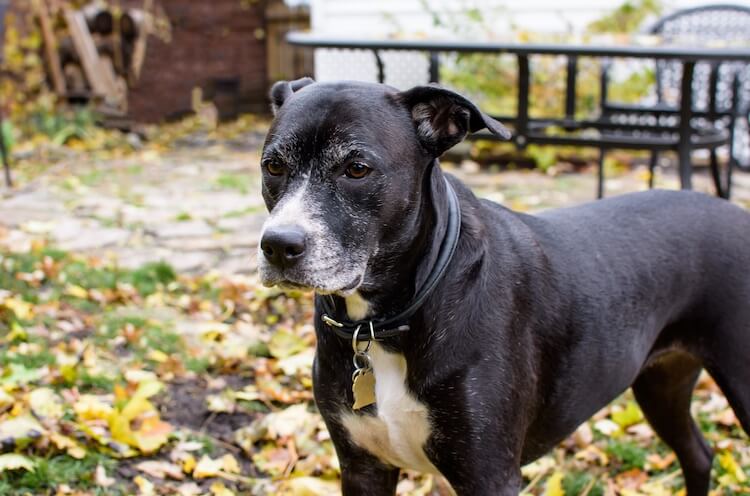
Boxadors are a captivating blend of their Boxer and Labrador parents, resulting in a dog with unique and charming physical traits. If you’re curious about what makes these dogs so special, let’s explore appearance.
Height and Weight
Boxadors are medium to large-sized dogs. Typically, they stand between 20 to 25 inches tall at the shoulder. Their weight ranges from 50 to 80 pounds. It’s fascinating to see how they combine the sturdiness of a Boxer with the athletic build of a Labrador. My neighbor’s Boxador, Max, is a perfect example. He’s solid and strong, yet surprisingly agile.
Coat and Color
Boxadors have a short, dense coat. This coat is easy to maintain and perfect for an active lifestyle. They can come in a variety of colors. You’ll often see black, brindle, brown, or a mix of these. I remember meeting a beautiful brindle Boxador at a dog park. His coat gleamed in the sunlight, catching everyone’s attention.
Other Physical Traits
One of the most striking features of a Boxador is their expressive face. They inherit the Boxer’s distinctive muzzle and the Labrador’s soulful eyes. This combination gives them a unique and charming look. Boxadors also have strong, muscular bodies. Their powerful legs make them excellent runners and jumpers. Watching a Boxador in action is a true delight.
These dogs have a well-balanced physique. Their ears can be floppy like a Labrador’s or slightly raised like a Boxer’s. Their tails are usually long and wag enthusiastically, showing their friendly nature. Every Boxador I’ve met has had this irresistible, joyous energy, making them hard to resist.
Temperament of the Boxador
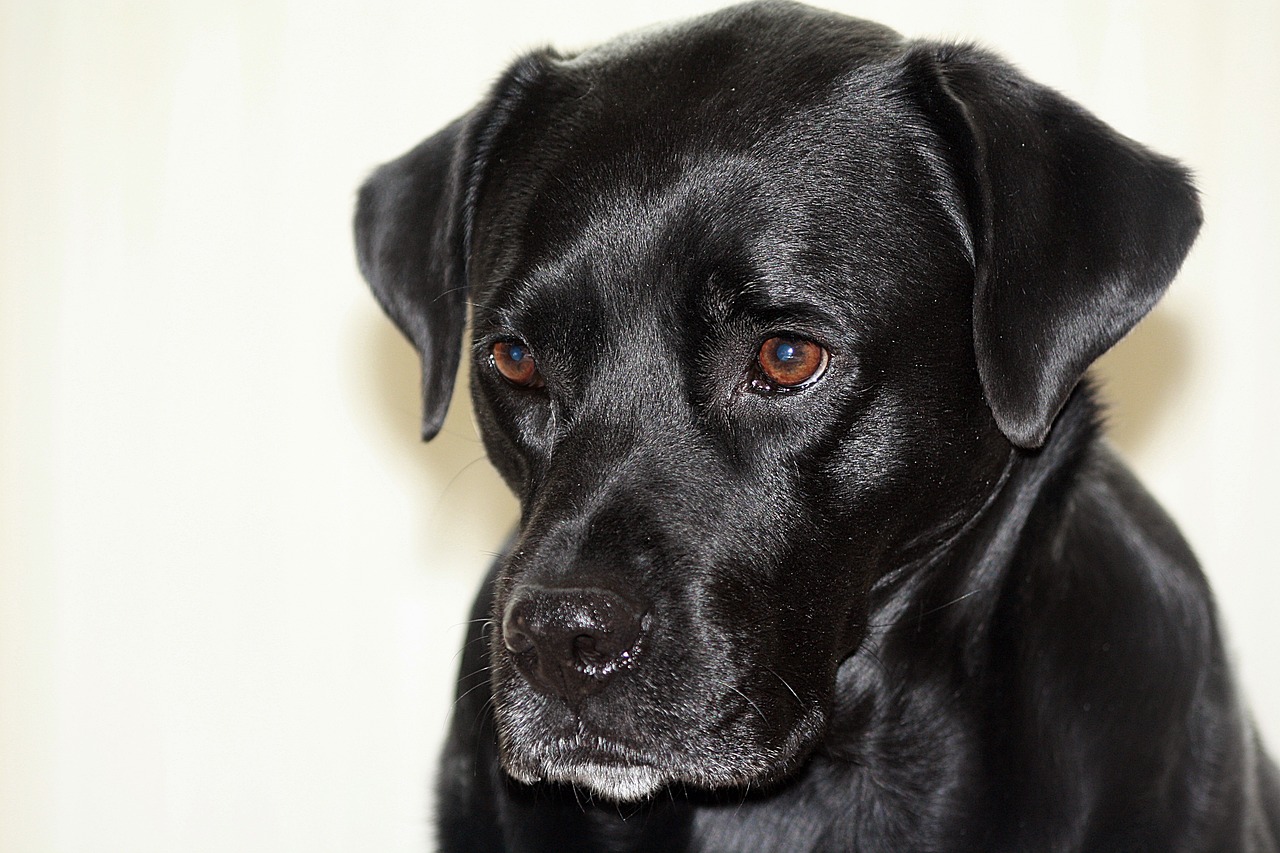
Imagine having a furry friend who’s always up for an adventure, showers you with affection, and brings joy to every moment. That’s the Boxador for you. Their vibrant personality and loving nature make them truly special companions. Let’s explore what makes their temperament so delightful.
Energetic and Playful
Boxadors are bundles of energy. They love to play and need plenty of exercise to stay happy. Whether it’s a game of fetch, a long walk, or a romp in the yard, they’re always ready for fun. I’ve seen Boxadors light up with joy when they’re running around, their enthusiasm is truly contagious.
Affectionate and Loyal
These dogs are incredibly affectionate. They form strong bonds with their families and love to be involved in all activities. My friend’s Boxador, Bella, is always by her side, offering companionship and comfort. Their loyalty is unmatched, and they thrive on being close to their loved ones.
Intelligent and Trainable
Boxadors are smart dogs. They inherit the intelligence of both parent breeds, making them highly trainable. With consistent training and positive reinforcement, they quickly learn commands and tricks. I’ve noticed that Boxadors are eager to please, which makes training a fun and rewarding experience.
Social and Friendly
These dogs are social butterflies. They get along well with children, other dogs, and even strangers. Their friendly nature makes them great family pets. I’ve often seen Boxadors at dog parks making new friends and playing nicely with everyone they meet.
Protective and Alert
While Boxadors are generally friendly, they also have a protective side. They are alert and will watch over their home and family. This makes them excellent watchdogs. Their protective instincts, combined with their loving nature, make them reliable and trustworthy companions.
How to Take Care of a Boxer Lab
Taking care of a Boxador is a rewarding journey filled with playful moments, affectionate cuddles, and endless adventures. These energetic dogs, with their infectious enthusiasm and loyal nature, make every day brighter.
Feeding
These dogs need a balanced diet that includes high-quality protein, healthy fats, and essential vitamins and minerals. I’ve learned from my experience with various breeds that a well-balanced diet is key to keeping a dog happy and active. So, make sure to look after what your Lab Boxer Mix eats.
Portion control is crucial. Boxadors can be prone to weight gain if overfed. It’s best to follow your vet’s recommendations on the right amount of food. Typically, splitting their meals into two portions a day helps maintain their energy levels throughout the day.
Boxadors thrive on a mix of dry kibble and wet food. Including a variety of foods not only keeps their diet interesting but also ensures they get a range of nutrients. Don’t forget to provide fresh water at all times to keep them hydrated, especially after exercise.
Grooming
Boxadors have short, dense coats that are relatively easy to maintain. Regular brushing helps keep their coat healthy and shiny. Using a soft-bristle brush once a week can remove loose hair and distribute natural oils, making their coat look its best.
Bathing your Boxador once every few months or when they get particularly dirty is usually sufficient. Using a gentle dog shampoo helps avoid skin irritation. It’s important to make the bathing experience pleasant for your dog, ensuring the water temperature is just right and being gentle during the process.
Don’t forget about their ears, teeth, and nails. Clean their ears regularly to prevent infections, brush their teeth a few times a week to maintain dental health, and trim their nails as needed. This routine keeps your Boxador looking and feeling their best.
Exercise
Boxadors are highly energetic and need plenty of exercise to stay happy and healthy. Daily walks are a must. A brisk walk in the morning and another in the evening can work wonders for their energy levels.
In addition to walks, Boxadors enjoy activities like running, playing fetch, and agility training. These activities not only provide physical exercise but also strengthen your bond with them. Taking a Boxador to the park for a game of fetch is a great way to tire them out and have fun together.
It’s also important to vary their exercise routine to keep things interesting. Introducing new activities or changing the walking route can stimulate their minds and prevent boredom.
Mental Stimulation
Mental stimulation is just as important as physical exercise for Boxadors. These intelligent dogs need activities that challenge their minds. Interactive toys and puzzle feeders are excellent for keeping them engaged. I’ve seen how much dogs enjoy figuring out new puzzle toys; it keeps them busy for hours.
Social interaction is also key. Boxadors thrive on human companionship and enjoy playing with other dogs. Organizing playdates or visits to the dog park can provide them with the social stimulation they need. It’s heartwarming to watch dogs interact with their canine friends; seeing their joy is truly rewarding.
How to Train a Boxador
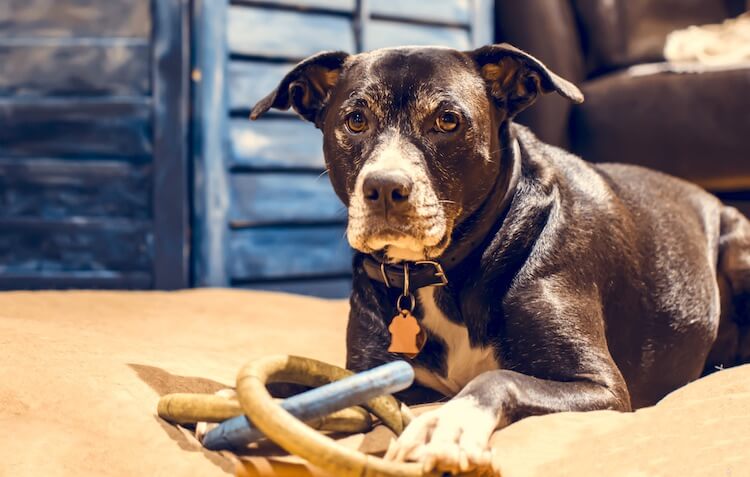
Training sessions can be a fun and rewarding experience. These intelligent and eager-to-please dogs thrive on learning new things and love spending time with their owners.
Basic Obedience Training
Starting with basic obedience training is essential. Commands like sit, stay, come, and heel form the foundation for good behavior. Begin training sessions when your Boxador is a puppy, but remember, it’s never too late to start. Consistency is key, so practice these commands daily.
Positive reinforcement works wonders with Boxadors. Use treats, praise, and playtime as rewards for good behavior. For example, when your Boxador sits on command, immediately reward them with a treat and enthusiastic praise. This method encourages them to repeat the desired behavior.
Keep training sessions short and engaging. Boxadors have a lot of energy and can get bored if sessions are too long. Aim for 10-15 minute sessions, and always end on a positive note. This ensures that your dog looks forward to training time.
Socialization
Expose your Boxador to different environments, people, and other dogs from an early age. This helps them become well-adjusted and confident. Take your Boxador to parks, pet-friendly stores, and introduce them to friends and family.
Organize playdates with other dogs to build their social skills. Supervised interactions teach your Boxador how to play nicely and respect boundaries. I’ve found that socialized dogs are generally happier and less anxious in new situations.
Socialization isn’t just about meeting other dogs. Introduce your Boxador to various sights, sounds, and experiences. This can include car rides, visits to the vet, or walking on different surfaces. The more positive experiences they have, the more adaptable they’ll be.
Advanced Training and Tricks
Once your Boxador has mastered basic obedience, you can move on to advanced training and fun tricks. Teaching tricks like roll over, shake, or fetch can be both stimulating and enjoyable for your dog. These activities challenge their mind and keep them engaged.
Agility training is another excellent way to exercise both their body and mind. Set up an obstacle course in your backyard or join a local agility class. Boxadors excel in agility due to their athleticism and quick learning ability. Plus, it’s a great way to bond with your dog.
Consider enrolling in a formal training class. Professional trainers can offer valuable insights and techniques tailored to your dog’s needs. Classes also provide a structured environment for your Boxador to learn and socialize.
Handling Behavioral Issues
Boxadors, like any breed, can develop behavioral issues if not properly trained. Common problems include jumping, chewing, and excessive barking. Address these issues promptly with consistent training and positive reinforcement.
If your Boxador jumps on people, teach them to sit and stay when greeting someone. Reward them when they remain calm. For chewing, provide plenty of chew toys and discourage chewing on inappropriate items by redirecting their attention.
Excessive barking can often be managed by identifying the cause and addressing it. Whether it’s boredom, anxiety, or alert barking, understanding the root of the behavior helps in finding an effective solution. Training, mental stimulation, and proper exercise are key.
Common Health Problems in Boxer Labs
Every dog breed has its unique set of health concerns, and the Boxador is no exception. While these energetic and loving dogs bring immense joy to our lives, it’s essential to be aware of the common health issues they might face. Understanding these potential problems can help you take proactive measures to ensure your Boxador stays healthy and happy.
Hip Dysplasia
A genetic condition where the hip joint doesn’t fit properly, hip dysplasia leads to significant pain and mobility issues over time. This condition occurs when the ball and socket of the hip joint develop abnormally, causing them to grind instead of sliding smoothly. Boxadors are particularly prone to this condition due to their parent breeds’ predisposition. If left unmanaged, hip dysplasia can severely impact your dog’s quality of life, making simple activities like walking or running painful.
- Provide a balanced diet to maintain a healthy weight. Excess weight can exacerbate joint problems.
- Ensure regular, moderate exercise. Keeping your dog active helps maintain joint health without overexerting them.
- Avoid excessive jumping or rough play. High-impact activities can worsen the condition.
- Schedule regular vet check-ups. Early detection can lead to more effective management.
- Consider joint supplements. Supplements like glucosamine and chondroitin can support joint health.
Allergies
Allergies in Boxadors can manifest as skin irritations, food sensitivities, or reactions to environmental factors. These allergies can lead to symptoms such as itching, redness, swelling, and discomfort. It’s important to identify and manage these allergies to keep your Boxador comfortable and healthy. By understanding what triggers your dog’s allergies, you can take steps to avoid these irritants and provide relief from symptoms, ensuring a happier, more comfortable life for your furry friend.
- Identify and avoid allergens. Work with your vet to pinpoint specific triggers.
- Feed a hypoallergenic diet if necessary. Special diets can help manage food allergies.
- Use medicated shampoos. These can soothe irritated skin and reduce symptoms.
- Provide regular grooming. Keeping your Boxador clean can help minimize exposure to allergens.
- Consult a vet for appropriate treatments. Medications or topical treatments may be needed to control severe reactions.
Heart Conditions
Boxadors may be prone to heart conditions such as cardiomyopathy and aortic stenosis, which can affect their overall health and lifespan. These conditions often require lifelong management and regular monitoring to ensure your dog remains healthy. Understanding the signs and symptoms of heart conditions, along with following a vet-recommended care plan, can significantly improve your Boxador’s quality of life and help manage these health issues effectively.
- Schedule regular heart screenings. Early detection can make a significant difference in treatment outcomes.
- Maintain a healthy diet and weight. Proper nutrition supports overall cardiovascular health.
- Avoid excessive exercise. Overexertion can strain the heart.
- Monitor for signs of fatigue or breathing issues. Early intervention can help manage symptoms.
- Follow your vet’s advice for any prescribed medications. Consistent medication can help control heart conditions effectively.
Bloat
Bloat, or gastric torsion, is a life-threatening condition where the stomach twists, causing severe pain and potential death if untreated. This condition requires immediate veterinary attention and can be fatal if not addressed quickly. Understanding the risk factors and being vigilant about your dog’s eating habits and activity levels after meals can help prevent this dangerous condition. Knowing the signs to watch for can save your Boxador’s life in an emergency.
- Feed smaller, frequent meals. This can help prevent the stomach from becoming overly distended.
- Avoid vigorous exercise after eating. Physical activity immediately after meals can increase the risk of bloat.
- Use elevated food bowls. This can reduce the amount of air swallowed during eating.
- Be aware of symptoms like restlessness and a distended abdomen. Early detection is crucial.
- Seek immediate veterinary care if symptoms appear. Quick action can save your dog’s life.
Eye Problems
Boxadors can inherit eye conditions such as cataracts and progressive retinal atrophy, which can lead to vision loss if not treated properly. Regular eye care and monitoring are essential to maintaining their eye health. By staying proactive and addressing any signs of eye issues early, you can help preserve your Boxador’s vision and overall well-being. Keeping their eyes healthy ensures they can enjoy life to the fullest without the limitations of impaired sight.
- Schedule regular eye exams. Early detection and treatment can prevent severe issues.
- Keep their eyes clean and free from debris. Regular cleaning can reduce the risk of infections.
- Monitor for signs of vision problems. Symptoms like cloudiness or excessive tearing should be addressed promptly.
- Provide a nutritious diet with eye-healthy nutrients. Certain vitamins and minerals support eye health.
- Follow vet recommendations for any necessary treatments. Timely intervention can help manage and treat eye conditions effectively.
Costs of Owning a Boxador
Bringing a Boxador into your life is an exciting and fulfilling journey, but it’s important to know what you’re signing up for financially. These energetic and loving companions come with a range of costs that can add up quickly. From initial setup to ongoing expenses, understanding the financial commitment involved will help you prepare and ensure that your Boxador has everything they need to thrive.
Initial Costs
When you first bring a Boxador home, there are several one-time expenses to consider. Adoption fees can vary, but if you’re getting your Boxador from a breeder, you might be looking at anywhere from $500 to $1,500. Then, there are the initial supplies: a sturdy crate, a comfortable bed, food and water bowls, and plenty of toys. Don’t forget the first round of vaccinations, which are essential for a healthy start. When I brought home my dog, the initial costs quickly added up, but it was worth every penny to see him settle in comfortably.
Food and Treats
Feeding a Boxador can be a significant ongoing expense. High-quality dog food is crucial to keep them healthy and active. Depending on the brand, you might spend around $40 to $70 per month on food. Treats for training and the occasional snack can add another $10 to $20 monthly.
Veterinary Care
Regular vet visits are essential for your Boxador’s well-being. Annual check-ups, vaccinations, and preventive care like flea and tick treatments can cost around $200 to $400 per year. Additionally, you should budget for unexpected medical expenses. Emergency visits or treatments for common health issues like hip dysplasia can be costly. Pet insurance is an option that can help manage these expenses. Personally, I’ve found pet insurance to be a lifesaver during unexpected health scares, providing peace of mind and financial relief.
Grooming
Boxadors have short coats that are relatively easy to maintain, but grooming still comes with costs. Regular brushing and occasional baths can be done at home, but professional grooming might be necessary a few times a year. Expect to spend around $30 to $60 per session. Nail trimming, ear cleaning, and dental care are other grooming aspects to consider.
Training and Socialization
Training is crucial for a well-behaved Boxador. Puppy classes, obedience training, and socialization sessions can range from $100 to $300 depending on the program and location. Investing in training early on pays off, as it helps build a strong bond with your dog and ensures they grow into a well-mannered adult.
Miscellaneous Expenses
There are always unexpected costs when owning a dog. Travel expenses, boarding fees, pet sitters, and replacing chewed-up toys or beds can add up. It’s wise to have a budget for these miscellaneous expenses. Having a contingency fund for your pet ensures you’re prepared for any surprise costs that come your way.
FAQs: More Details About Boxadors
Are Boxadors good with children?
Yes, Boxadors are generally excellent with children. They are affectionate, playful, and patient, making them great family pets. Supervise interactions to ensure both the dog and children play safely.
Do Boxadors shed a lot?
Boxadors have short coats that shed moderately. Regular brushing can help manage shedding and keep their coat looking its best. It’s also a good opportunity to check for any skin issues.
Can Boxadors be left alone for long periods?
Boxadors can become anxious if left alone for long periods. They thrive on companionship and may develop destructive behaviors if isolated too much. If you need to leave them alone, provide toys and consider a pet sitter or dog walker.
What kind of diet is best for a Boxador?
A balanced diet rich in high-quality protein, healthy fats, and essential vitamins is best for a Boxador. Consult your vet to determine the appropriate portion sizes and specific dietary needs. Fresh water should always be available.
Are Boxadors good with other pets?
Boxadors are generally good with other pets, especially if socialized from a young age. They tend to be friendly and playful but monitor their interactions initially. Proper introductions and supervision are essential for a harmonious relationship.
How long do Boxadors typically live?
Boxadors typically live between 10 to 14 years. Their lifespan can vary based on genetics, diet, exercise, and overall care. Regular veterinary visits and a healthy lifestyle can help maximize their lifespan.
So, Is the Boxador Right For You?
These lovable and lively dogs are a fantastic addition to any family, but they do come with their own set of needs. Having a Boxador around means always having a playful, affectionate companion by your side. But there are also challenges, which can be addressed if you have the right knowledge. I highly suggest that you do your research first before you decide to bring a boxador home.
Boxadors Are For
- Active Individuals or Families: Boxadors are perfect for those who have the time and energy to keep up with their playful and energetic nature.
- Outdoor Enthusiasts: If you enjoy hiking, running, or playing fetch, a Boxador will be a great companion.
- Loving and Social Homes: Boxadors thrive in environments where they can form strong bonds and be involved in daily activities.
- Homes with Children and Other Pets: Their friendly and social demeanor makes them wonderful additions to households with kids and other animals.
Boxadors Are NOT For
- Busy Professionals: People with very busy lifestyles who can’t provide the necessary time and attention might find Boxadors challenging.
- Frequent Travelers: If you travel frequently or work long hours, consider if you have the resources to ensure they’re well cared for in your absence.
- Low-energy Households: Boxadors need consistent exercise, training, and mental engagement, making them unsuitable for more sedentary lifestyles.
- Low-maintenance Seekers: If you’re looking for a low-maintenance pet, a Boxador’s exercise and training needs might be too demanding.
Other Labrador Retriever and Boxer Mixes
If you’re interested in learning about other Lab mixes or Boxer mixes, check out the hybrid dog breeds below.
Lab Mixes
- German Shepherd Lab Mix
- Pitbull Lab Mix
- Blue Heeler Lab Mix
- Golden Retriever Lab Mix
- Rottweiler Lab Mix
- Beagle Lab Mix
- Border Collie Lab Mix
- Husky Lab Mix
- Australian Shepherd Lab Mix
- Labrabull
- Labradoodle Dog
- Mini Labradoodle
- Australian Labradoodle


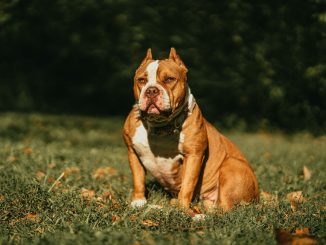

I just got a boxador puppy. I am not one to be active at all and I truly do love the fact that she is getting me up and around plus gets my pitbull to play again. The only problem I seem to have is her barking and wining when I put her in her kennel for the night.
My partner and I rescued a boxador two years ago and we couldn’t be happier. It took him a while to adjust to his new life, as we believe he was wasn’t treated well by his former owner. But, he did so very well. This article accurately depicts what our dog, Harvey, is like. He has become our best friend and companion.
We rescued Coco from Battersea Dogs Home and it’s the best thing we could have done. Our Boxador has become our best friend and a truly wonderful guard dog. She needs long walks and play time which we find therapeutic for ourselves so we are all happy. The above description fits perfectly.
We just adopted a 12 week old puppy- she is the love of my life. She is so smart and attached to myself & my husband.. ❤️❤️
How long until the Boxador calms down a bit. Mine is 2 years old and still in full on puppy mode.
Boxers are renowned for being puppies for life! We joke, but they can seem to take a while to mature. It could be worth spending some time on games to teach impulse control, focus on brain games, or teach him to wait for things – to have his leash attached or to wait for his meal.
You can also introduce interval walks, so in a 20 minute walk you may ask him to sit 10 times or in a 25 minute walk you may ask him to sit 15 times. These tasks help teach focus which can show your pooch that good things happen when he’s calm too!
We have a four year old Boxador and he’s calmed down the last year. By calm down it’s mostly lazy until he notices a leaf or a kid outside. He’ll do nonstop zoomies, throw stuff around the house lmao. He doesn’t chew though. But he jumps and run around. Then battery dead, back to his couch by the window. Repeat cycle. It’s a lot of fun but he’s a very good boy. He’s a puppy forever though, we call him Puppy. His name is Hans.
mine is the same
Hi I am considering adopting a lab and boxer mix. I work and have to go to work daily but my husband works from home. He needs to travel often. Your article guided me very well on what to expect. The baby girl we are adopting is 1.5 months and I was curious to know if she will be ok some days being alone at home during daytime or saying a day boarding. I want to give her a perfect home can spend time with her, please guide.
Hi Neyhee,
It’s not generally advised to leave dogs alone for more than 3-4 hours at any one time and this is if they are well adjusted with no signs of separation issues. Some dogs can’t even cope with 30 mins to 1 hour being left alone. Not only do dogs need regular toilet breaks but they also need mental stimulation. Hours alone can lead to boredom which often results in distress and destruction. If possible, can you ask a dog walker to split the day up and take her for a good explore to engage her mind?
Or, if you would rather perhaps a daycare would be a better option? If cost is an issue, do you have friends or family that could pop in to walk her or spend time with her on those days she would be alone? Sometimes college kids are keen to dog walk so look for ads in your local area.
The fact that you are adopting may throw some curve balls into the mix also. Consider her history, has she already got separation issues? Is she sociable enough to accept a dog walker or attend daycare? Take things slow and at her pace, we probably wouldn’t be introducing new things until she is fully settled with you guys.
If you have any further questions, please feel free to get in touch. Good luck with the adoption.
We have a boxador who likes to play bite when he’s excited. It can tend to hurt the children at times (never puncturing the skin but putting his mouth around arms/legs) and we haven’t been successful at stopping the behavior, although it’s gotten better. We rescued him at 4 months and he is currently 7 months old. Is this normal behavior, and any tips to completely stop this? Other than that, he’s been a great pup and the kids absolutely adore him.
It’s difficult raising a puppy with children as sometimes, the puppy can receive inconsistent messages. Chances are when your puppy mouths the children, the children fling their arms around and move; which unfortunately your puppy then understands to be play. You say it happens when he gets excited; are there certain times of day?
If you are getting ready to go for a walk, it can help to attach his leash and simply head straight out the door – avoiding the build-up. If he simply wants to play, have toys and ropes in every room of the house and encourage your children to play with him with the toys. If he’s being a typical puppy and not settling, it could be worth training the settle command (like the stay) and teaching your children how to train it too.
If all else fails, you can set up a quiet space in the house and train him to go there if he’s getting himself too worked up (much like the settle), it can be partitioned. It must be remembered this isn’t a punishment, it’s simply teaching him self-control. As always its essential to supervise all interactions between your children and dog.
I got a five month old Boxador puppy (a rescue) back in April. I have had a few different breeds of dogs over the years, but Doc is one of the best I’ve ever had. He’s personable, friendly, playful, and protective, and gentle with the young children in my house. I had no idea his combination had a name until recently, but ‘Boxador’ sounds so much better than a “mix,” or “just a hound.”
I have a 12 year old brindle boxador and she is one of the smartest dogs I’ve ever had. While she is getting up there in age and has a little bit of a hip problem I couldn’t be happier. She is a wonderful guard dog and is gentle with the kids. We did have separation issues when she was a puppy so put your shoes where your dog can’t reach them. Other than that she has been very obedient and gets along well with our over active Miniature American Shepherd. These are great dogs if you’re considering getting one but make sure you socialize them at an early age
We had a Boxador we rescued at 8 weeks old for almost 10 years. He was the most wonderful family dog, smart, loved the children. He grew up with my 9 and 14 year old boys. We would get another one in a heartbeat and have slowly started to look for another puppy. He calmed down around 3-4 years old and was the perfect family dog. He use to jump we would turn our backs when we got home ignore him for a few and it broke the habit it in a week. Very loyal especially to the “pack” leader. They love to walk and play they need to exercise love playing catch and soccer. I wish everyone the best with your Boxador you have the best of the best dogs when it comes to two great breeds combined.
We have two 11.5 yr old Boxadors. They are such great dogs with lots of energy, especially for the first 4 years, we got 2 hoping they would keep each other entertained because we both work – and let me tell you that they play and play and play and play….they use to “Box” each other all the time. Our boy is a very dark brindle with almost no white markings and is 26″ tall weighing 78lbs and our girl is the red/brown with a darker face that started turning white at age 3 and is 24″ tall and weighs 82 lbs. We HAD to keep them exercised and entertained when they were young. Our girl dog would chew – ANYTHING. If you aren’t going to walk / exercise / socialize your dog DON’T get a Boxador. Wonderful family dogs for an active family. At 11.5 they have slowed down but still go camping with us and enjoy their walks. I love this blend of dog and highly recommend it as long as you are very active! Or expect your stuff to get destroyed. 🙂
My female Boxador is 4 years old. She was left at the pound. I rescued her when she was 1. I had cats the entire time I had her, but in the last 6 months they both died. Now she seems sad and depressed. Do these dogs require companionship? I want to do what is best for my Layla girl.
I can’t imagine my Echo being an “only child.” I suspect he would feel lonely and depressed unless he was with me every second. Maybe a new kitty buddy might help your baby?
I have a 6.5 year old, male Boxador, silky black with a white chin. He believes he’d the CUTEST DOG IN THE WORLD! He’s great with kids and other dogs of all sizes; just a great big heart that loves. He’s active and playful, but not quite as hyper as this article would suggest. He’s like a living stuffed animal and loves to be snuggled and loved on. His intellect and loyalty are fierce and I suspect he would have severe separation anxiety issues if it weren’t for the other two beasties we have. I’m definitely sold on this breed and it influenced my other adoption choices as well!
I was asked to take a puppy found on a road. I was apprehensive at first but I took in this sweet Buddy. He was flea and tick ridden & to this day hates to be “picked over”. The vet said he was a lab boxer mix. Long story short, he has turned out to be a very loyal and playful dog. He gets along with other dogs and cats but doesn’t trust men. He is getting better as I am socializing him. Couldn’t ask for a better companion as we walk/play for at least 2 hours a day.
We adopted Loki from one of the local shelters. He was billed as a Lab mix. He fits into the Boxador mold. We are very pleased with him. He is smart as a whip. Picks up social clues quickly, responded to housebreaking almost immediately. He is 6 months old. We are looking forward to a LOT of fun.
Our family just took in a 9 month old female boxador. Her first owner left her with an ex and he couldn’t be home all day so she started chewing out of separation anxiety. I can say with full confidence, she’s a wonderful pup. I agree, this breed needs A LOT of exercise. I have two toddler sons and while they nap, I take her outside for at least an hour of very active play plus in the evening. We are working on the separation anxiety but I’m home 99% of the time so that helps. This breed is made to love and please. I think I might have the sweetest pup ever, our family just adores her. Smart, can be great as hunting companions etc. Do your research, it’s a wonderful breed to consider.
Someone left 2 litters in a cart at a grocery store I work at and I brought one home. Shes about 18 weeks now and ive had her for about 6 weeks. Shes a sweetheart and has been surprisingly easy to train, very mellow (when she doesnt have the zoomies!), and loves to play fetch. She loves to go on walkies and sniff all the critter tracks (we live in alaska). Based on her appearance and descriptions of the mix, my best guess so far is boxador. Absolute darling of a dog. An aggressive chewer, but really only on her toys – and SUCH a cuddler! I dont know how anyone could abandon a cart full of this sweet face.
I have an 18mo boxador, he is black with brindle paws and a tuxedo chest. He is CRAZY 90% of the time but learns commands very fast. We haven’t mastered no jumping but everything else he learned very easily! He is so loyal to me that he learned to be off-leash by the time he was three months old. Worth noting-it took about a year to completely potty train him. He would do ‘attention accidents’ if we didn’t spend enough time playing with him. Crate training did not work. He is finally calming down a bit and cuddling again! He loves our cat.
GREAT BREED!!!! We just had to put our boxador down today.Hardest thing ever!!! She was 14 wud have been 15 in October. She was the best …from day one she was easy to train she never barked …was great with my young son .They were best friends growing up together!!! She couldn’t stand with her back legs anymore and had developed cancer in her eye yet she still tried to comfort us today on her last day 😪 She (Diamond) u will GREATLY MISSED)